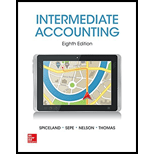
Method of Inventory: Inventory refers to the current assets that a company expects to sell during the normal course of business operations, the goods that are under process to be completed for future sale, or currently used for producing goods to be sold in the market. Inventory is valued under three methods:
FIFO: Under this inventory method, the units that are purchased first, are sold first. Thus, it starts from the selling of the beginning inventory, followed by the units purchased in a chronological order of their purchases took place during a particular period.
LIFO: Under this inventory method, the units that are purchased last, are sold first. Thus, it starts from the selling of the units recently purchased and ending with the beginning inventory.
Average cost method: Under this method, the cost of the goods available for sale is divided by the number of units available for sale during a particular period.
To Explain: the meaning of the Internal Revenue Service conformity rule with respect to the inventory method choice.
Want to see the full answer?
Check out a sample textbook solution
Chapter 8 Solutions
INTERMEDIATE ACCOUNTING W/CONNECT PLUS
- Kimberly, Inc. has accounts receivable of $28,500, total assets of $342,000, cost of goods sold of $195,200, and a capital intensity ratio of 1.14. What is the accounts receivable turnover rate?arrow_forwardI am searching for the accurate solution to this general accounting problem with the right approach.arrow_forwardCan you solve this general accounting question with the appropriate accounting analysis techniques?arrow_forward
- Accurate answerarrow_forwardSolve this qnarrow_forwardOLX Enterprises purchased a machine for $325,000 on October 1, 2010. The estimated service life is ten years with a $32,600 residual value. OLX records partial-year depreciation based on the number of months in service. Depreciation expense for the year ended December 31, 2010, using straight-line depreciation, is?arrow_forward
- For Ikea Manufacturing, the predetermined overhead rate is 125% of direct labor cost. During the month, Ikea incurred $96,000 in total factory labor costs, of which $78,400 is direct labor and $17,600 is indirect labor. The actual manufacturing overhead incurred was $100,500. Compute the amount of manufacturing overhead applied during the month. Determine the amount of under- or overapplied manufacturing overhead.arrow_forwardWhat is the correct answer with general accountingarrow_forwardNonearrow_forward
 Auditing: A Risk Based-Approach (MindTap Course L...AccountingISBN:9781337619455Author:Karla M Johnstone, Audrey A. Gramling, Larry E. RittenbergPublisher:Cengage LearningPrinciples of Accounting Volume 1AccountingISBN:9781947172685Author:OpenStaxPublisher:OpenStax College
Auditing: A Risk Based-Approach (MindTap Course L...AccountingISBN:9781337619455Author:Karla M Johnstone, Audrey A. Gramling, Larry E. RittenbergPublisher:Cengage LearningPrinciples of Accounting Volume 1AccountingISBN:9781947172685Author:OpenStaxPublisher:OpenStax College Auditing: A Risk Based-Approach to Conducting a Q...AccountingISBN:9781305080577Author:Karla M Johnstone, Audrey A. Gramling, Larry E. RittenbergPublisher:South-Western College Pub
Auditing: A Risk Based-Approach to Conducting a Q...AccountingISBN:9781305080577Author:Karla M Johnstone, Audrey A. Gramling, Larry E. RittenbergPublisher:South-Western College Pub Cornerstones of Financial AccountingAccountingISBN:9781337690881Author:Jay Rich, Jeff JonesPublisher:Cengage Learning
Cornerstones of Financial AccountingAccountingISBN:9781337690881Author:Jay Rich, Jeff JonesPublisher:Cengage Learning Financial And Managerial AccountingAccountingISBN:9781337902663Author:WARREN, Carl S.Publisher:Cengage Learning,
Financial And Managerial AccountingAccountingISBN:9781337902663Author:WARREN, Carl S.Publisher:Cengage Learning,





